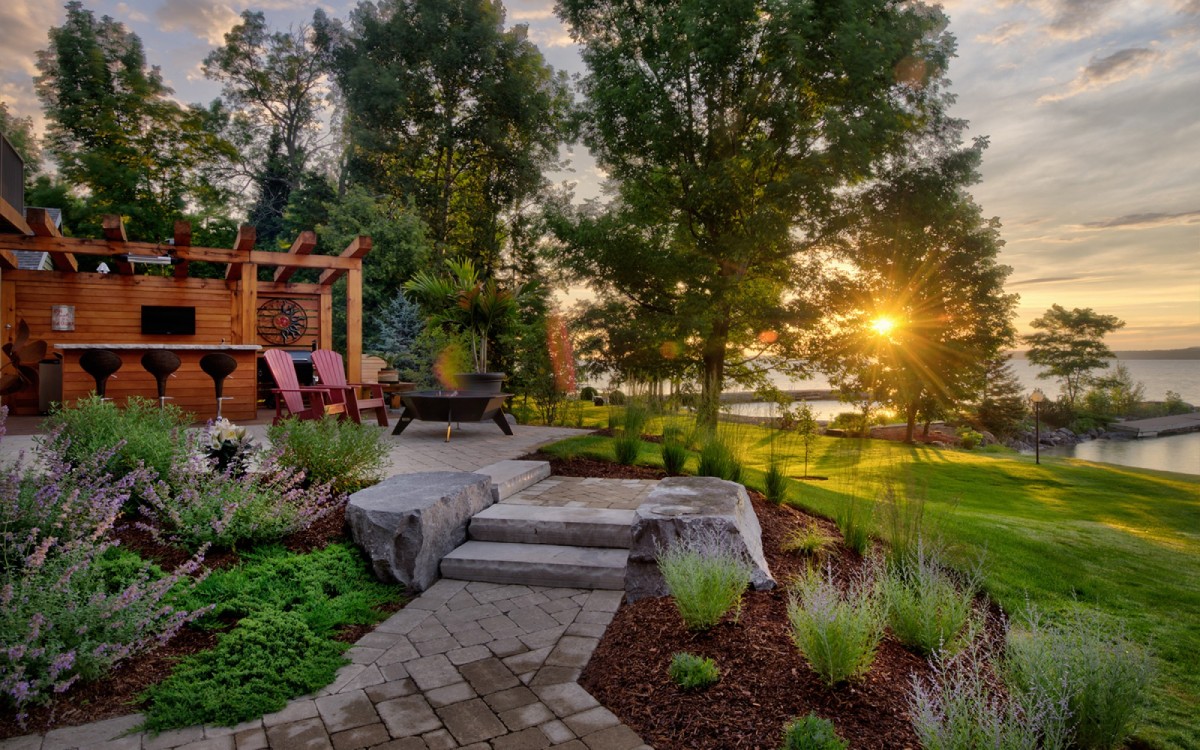Landscape design is an artistic discipline that fuses the beauty of nature with the creativity of human expression. As we increasingly value outdoor spaces that provide tranquility and links to the environment, creative landscape design is vital. Whether you have a large backyard or a modest front yard, there are countless ways to change your outdoor spaces into beautiful sanctuaries that reflect your personal style.
In this post, we will explore a range of creative approaches to landscape design, providing ideas and practical tips. From beginner-friendly ideas for basic landscaping to advanced concepts that include hardscaping and sustainable practices, we will guide you through the latest trends and key strategies for designing lovely, functional outdoor spaces. Join us as we delve into the realm of nature's palette, where your landscape can truly flourish.
Innovative Landscape Creation Ideas
Redesigning your landscape space can be an exciting venture, especially with fresh landscape planning concepts that enhance visual appeal and functionality. One method is to incorporate modern water features like smooth waterfalls or organic ponds that can act as focal points. These features not only contribute aesthetic appeal but also create calming noises that enhance relaxation in your outdoor space. Combining these aquatic features with strategically placed lounging areas can create an inviting environment for entertaining or relaxing after a hard stint.

Another creative concept is the incorporation of non-plant elements to shape your landscape's character. Using pathways with various substances such as gravel, bricks, or slabs can add intrigue and guide viewers through your property. Garden features such as pergolas or arbors can also function dual purposes: giving shade while improving your landscape's scheme. This interplay between infrastructure and landscaping can create a balanced and cohesive garden environment that feels both friendly and skillfully planned.
Incorporating indigenous flora into your planting scheme is both progressive and ecologically friendly. These species are adapted to your environment and soil conditions, requiring less irrigation and upkeep than non-natives. By creating a landscape that features indigenous species, you not only promote ecological diversity but also create a gorgeous aesthetic showcase that changes with the year. This approach allows you to foster a connection with the ecosystem while ensuring your landscape creation remains easy to care for and environmentally friendly.
Handy Advice for Every Property Owner
As you embark on a landscape design project, it is important to grasp your space and its capabilities. Begin by evaluating your yard’s sunlight, soil type, and drainage. Considering these factors will assist you pick the best plants and layout. Additionally, consider how you intend to use the space: having gatherings, gardening, or merely relaxing. This understanding will direct your design choices and guarantee you create a practical outdoor area that meets your wants.
Budgeting is another key factor of landscape design. You don’t need to break the bank to achieve stunning results. Identify your projects and focus on high-impact areas first. For instance, adding a few hardy plants or a small hardscape feature can significantly uplift your landscape. Take advantage of discounts during seasons and consider DIY projects if feasible. This strategy not only saves money but also adds the personal touch in your outdoor space.
Lastly, maintenance should be a factor from the beginning. Choose low-maintenance plants and sustainable practices that conserve time and materials. Including native plants will not just reduce upkeep but also support local wildlife and ecosystems. Keep in mind, a well-designed landscape should be enjoyable and easy to maintain, allowing you to enjoy more time relaxing in your outdoor haven instead of maintaining it.
Sustainable and Environmentally-Conscious Approaches
Incorporating sustainable practices into landscaping not only helps the environment but also produces aesthetically pleasing, vibrant outdoor environments. One of the main components is the use of native plants, which are adapted to the local climate and soil conditions. They require less water, fertilizers, and pesticides, making them a low-maintenance and eco-conscious choice. Additionally, native plants support local wildlife, providing vital homes and food supplies for pollinators and various helpful species.
Another vital aspect of eco-friendly landscaping is the use of hard landscape elements that promote sustainability. Using permeable materials for patios and walkways allows for improved water drainage and reduces runoff, which aids recharge groundwater supplies. Furthermore, installing water features such as rain gardens or ponds can control stormwater effectively while enhancing the aesthetic appeal of the landscape. These features can also support diverse ecosystems, fostering a connection between your yard and the surrounding environment.
Finally, including edible landscapes presents a distinct opportunity to promote sustainability. Creating your landscape to include fruit trees, vegetable patches, and herbs offers not just fresh produce but additionally reduces the carbon footprint associated with transporting food. Creating landscape designers near me where one can grow their own food promotes a self-sustaining lifestyle while enriching the landscape's aesthetic and productivity. By prioritizing these sustainable practices, homeowners can develop inviting outdoor spaces that are both functional and environmentally responsible.
